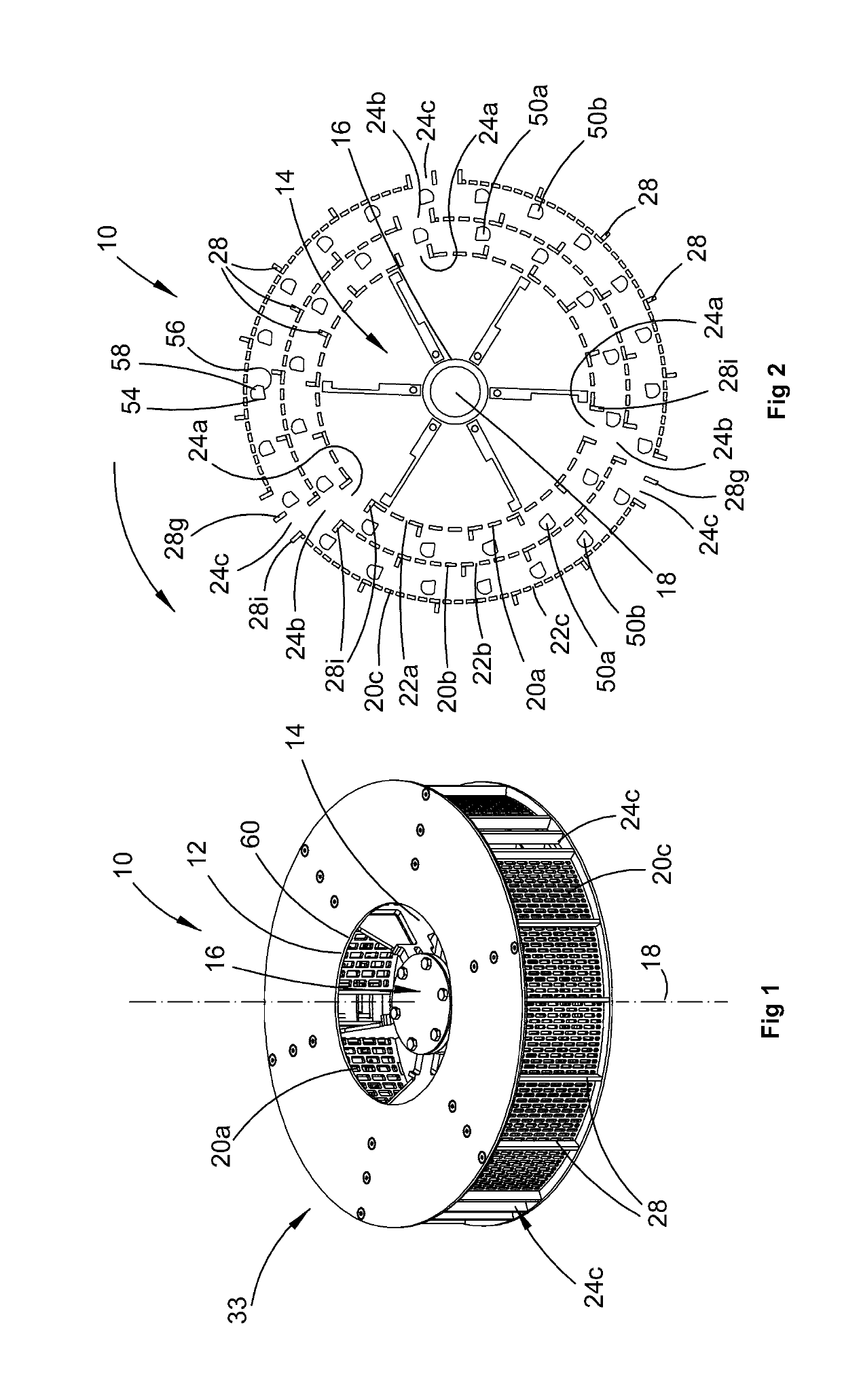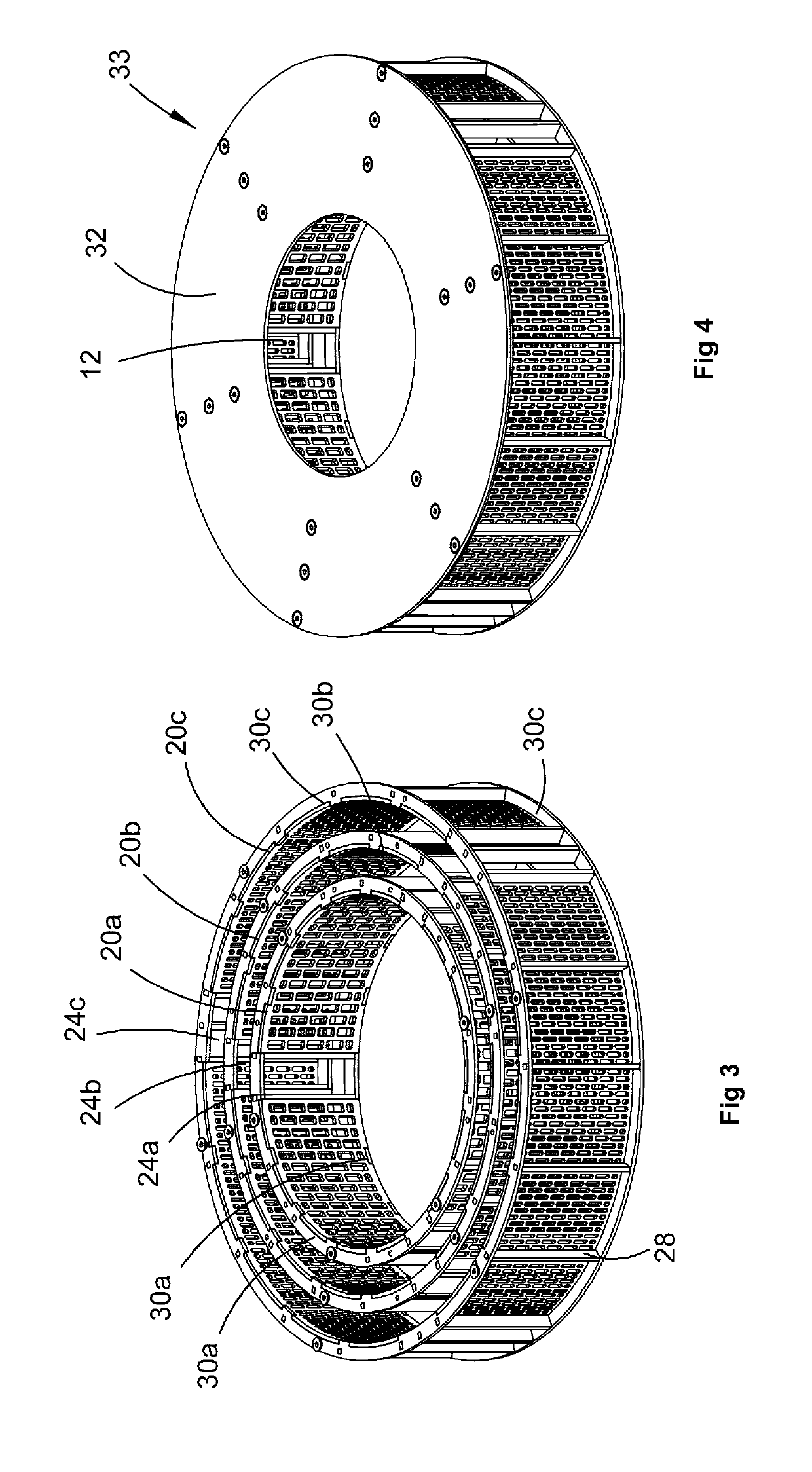A multistage hammer mill and a residue processing system incorporating same
a multi-stage hammer mill and processing system technology, applied in the field of multi-stage hammer mills and residue processing systems incorporating same, can solve the problems of limiting the food production capacity of agricultural areas around the globe, one of the biggest threats to global food security, and the biggest constraints and costs
- Summary
- Abstract
- Description
- Claims
- Application Information
AI Technical Summary
Benefits of technology
Problems solved by technology
Method used
Image
Examples
Embodiment Construction
[0053]FIGS. 1, 2 and 6 depict an embodiment of the disclosed multistage hammer mill 10 (hereinafter referred to in general “hammer mill 10”). The multistage hammer mill 10 has a central feed opening 12 enabling material flow into a primary impact or destruction zone 14. An impact mechanism 16 is located in the primary impact zone 14 and is capable of rotating about a rotation axis 18. The impact mechanism 16 is arranged to impact the material entering the primary impact zone 14 and accelerate the impacted material in a radial outward direction. The hammer mill 10 also has a first screen arrangement 20a and at least a second screen arrangement 20b. The first screen arrangement 20a is disposed circumferentially about the impact mechanism 16 and forms a boundary of the primary impact zone 14. The first screen arrangement 20a has a plurality of apertures 22a through which impacted material of a first size range can pass.
[0054]The second screen arrangement 20b is disposed circumferential...
PUM
 Login to View More
Login to View More Abstract
Description
Claims
Application Information
 Login to View More
Login to View More - R&D
- Intellectual Property
- Life Sciences
- Materials
- Tech Scout
- Unparalleled Data Quality
- Higher Quality Content
- 60% Fewer Hallucinations
Browse by: Latest US Patents, China's latest patents, Technical Efficacy Thesaurus, Application Domain, Technology Topic, Popular Technical Reports.
© 2025 PatSnap. All rights reserved.Legal|Privacy policy|Modern Slavery Act Transparency Statement|Sitemap|About US| Contact US: help@patsnap.com



